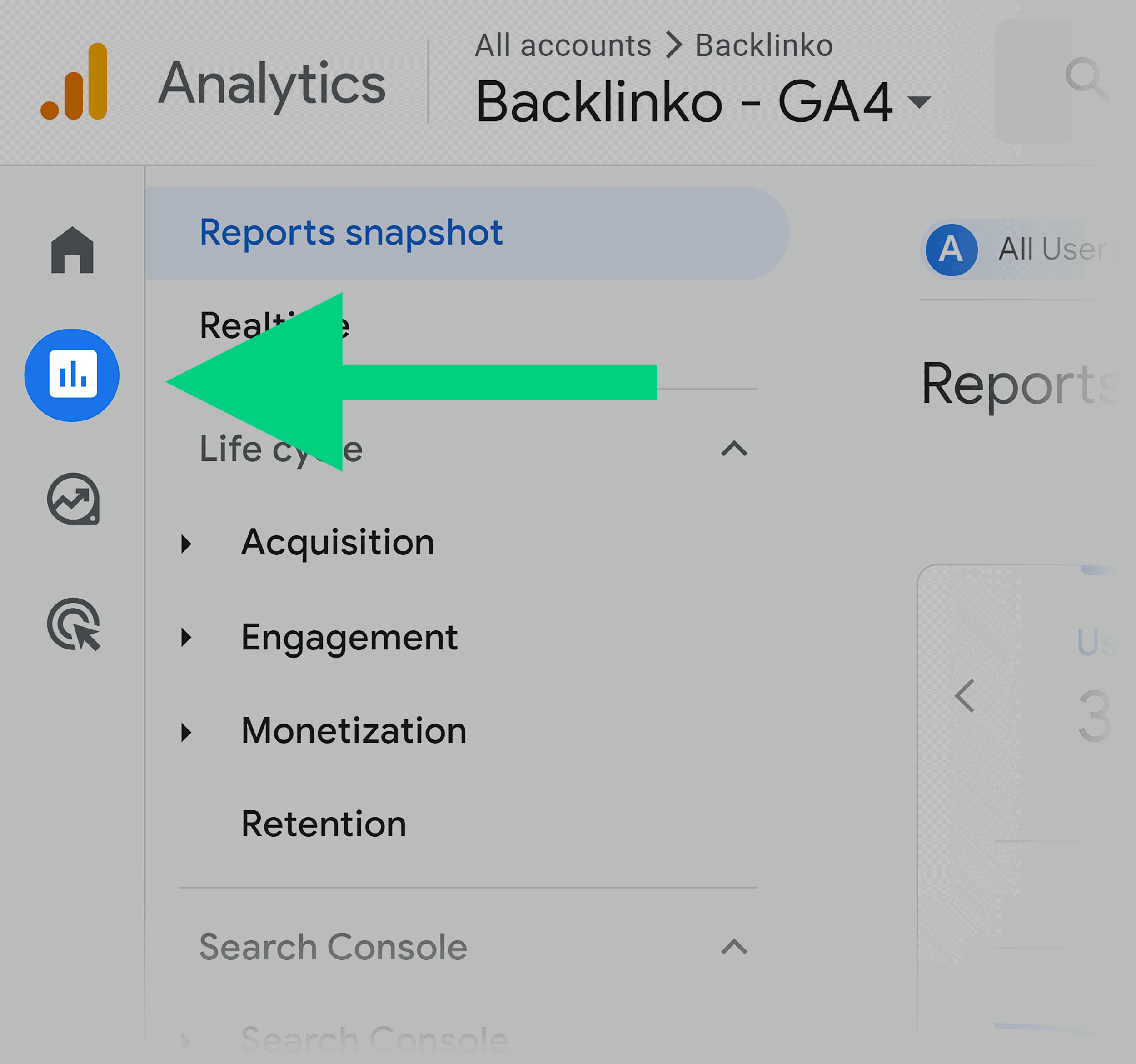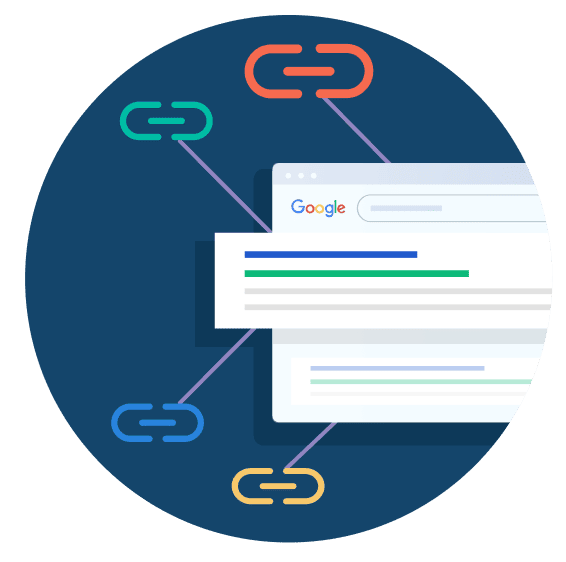International SEO: How to Dominate Global Rankings
International SEO is tough. Many have tried and failed, but the payoff is enormous for those who succeed.
In this all-new guide you’ll learn all about:
- International SEO basics
- Market research and strategy
- Global content strategy
- Domain structure options
- Technical SEO considerations
Ready to become the next big global brand?
Let’s go.

Chapter 1: International SEO Basics

Before we immerse ourselves in the deep technical waters of international SEO, let’s start with the fundamentals.
If you’re new to this, you’re in the right spot.
Otherwise, keep scrolling.
There are a lot of juicy, advanced tips waiting for you in the following chapters.
What Is International SEO?
International SEO is a range of optimization strategies to boost your website’s visibility in search engine results pages (SERPS)—across different countries or languages. From a technical standpoint, it involves configuring your site architecture and infrastructure to support localization. Equally important, it requires adapting your content to resonate with the language, culture, and user expectations of each market you’re targeting.
Let’s say you’ve got three different pages in your ecommerce store selling the same product. But in different languages.
One in US English.
Another in French for France.
And a third in French for Canada.
With well-executed international SEO, when someone in France searches for that product online, they will see your France-specific French page in the search results.
Not the French Canadian or US English versions—which is exactly what you want so you get targeted traffic that’s likely to buy.
Businesses typically turn to international SEO to break into new markets.
This might involve targeting a different country. Or expanding out to non-native language speakers within their existing market.
Here’s an example using Booking.com.
Note: Don’t have a Semrush account? Sign up for a free account and get 10 free searches per day!
Semrush data for “miami hotels” shows us the top-searching countries for the keyword, which are: The US, Canada, The UK., Germany, Chile, and Thailandc.

Given this insight, it makes sense that they have unique versions of the “miami hotels” product page for different countries.
Two examples:
The US product page:

The Spanish version:

And now, let’s head over to Startpage to see how these two pages rank in their respective regions.
Worth knowing: Startpage shows Google search results without the tracking. You can customize it so that it displays results from the Google regional server you prefer.
When someone in Spain searches for “hoteles en miami,” the Spanish version ranks at the top of the results: https://www.booking.com/city/us/miami.es.html

When someone in the US searches for “miami hotels,” the US English version of the site ranks: https://www.booking.com/city/us/miami.html

And that, young Padawan, is International SEO reaping its rewards.
International SEO Benefits
More traffic. Wider reach. Brand domination. Ka-ching.
For globally-ready businesses, effective international SEO brings all these upsides.
Sure, it’s not for every business.
But for those who are a fit?
The rewards justify the effort.
Here’s why.
1. Search Engines Display Your Most Relevant Pages
Your top relevant pages dominating the first spots on Google.
That is the dream, right?
But there’s more to it than just ranking on the search engines.
When searchers come across your listing that’s spot-on relevant—and it’s exactly what they need and in their language—they’re more inclined to click.
So what?
Click-through rates go up. Relevancy signals get stronger.
Before you know it, you’re on Google’s good side.
2. Visitors Stick Around Longer and Engage More
Pogo sticking? Thing of the past.
When search engines list the most accurate page, searchers find exactly what they’re looking for.
This keeps them on your site longer. They start exploring more of what you offer.
The better their experience on your site, the more they engage.
The more they engage, the greater the revenue possibilities for the website.
3. End Duplicate Content Issues
You know duplicate content can mess with your rankings.
It confuses search engines as to which page is more relevant. And leads to poor user experiences.
International SEO changes that.
By giving search engines clear signals about the right page version for the user, based on language or region, you set your site up for better rankings worldwide.
4. International SEO Expands Your Business Reach
More pages ranking in global search engines = More potential customer reach.
This visibility leads to:
- Brand recognition and trust
- Reduced reliance on a single market
How International SEO Differs From Traditional SEO
Let’s cut to the chase:
International SEO is a much more complex beast than traditional SEO.
Yes, the core principles are the same.
But international SEO cranks up the complexity.
In traditional SEO, the focus is clear-cut. You’re optimizing for users in a specific country.
This makes keyword targeting more direct and focused.
But with International SEO, you’re targeting multiple regions, each with its own language and keyword sets.
And because of that, strategy and execution can vary widely.
Here’s what we mean:
| Comparison Point | Traditional SEO | International SEO |
|---|---|---|
| Target audience | Local area, region, or specific country | Multiple countries or languages |
| Language | Content typically in a single language, usually the dominant local one | Content may include variations of the same language for different regions. Or multiple languages. |
| Cultural considerations | Tailored to local cultural norms and preferences | Requires cultural localization for diverse global audiences |
| Domain structure | Single domain, straightforward structure | Use of ccTLDs, subdomains, or subdirectories for different regions or languages |
| Keyword strategy | Localized keywords specific to the region/country | Separate keyword research for each language or country |
| Search engine focus | Often primarily Google or the dominant local search engine | May need to optimize for various search engines popular in different countries (e.g., Baidu, Yandex) |
| Technical SEO | Standard practices (site speed, mobile-friendliness) | Additional practices like hreflang attributes |
| Legal/regulatory compliance | Compliance with local laws and regulations | Compliance with multiple sets of laws and regulations in different countries |
| Content Strategy | Tailored to local interests and events | Localized and culturally relevant content for different regions |
As you can see, in International SEO, you’ll be juggling a lot of tasks at the same time.
You’ll manage different keyword sets, each specifically tailored to different regions and languages.
Recommended: Check out the International SEO Course from TrafficThinkTank.com!
Then there’s the technical front:
- Separate content pages
- Hreflang attributes
- Canonical tags
- Javascript for language switchers
- A database to handle different currencies
And that’s not all.
Cultural nuances play a huge part, too.
Because when you’re expanding to a region unfamiliar to you, there are cultural differences that are far more challenging to learn than hreflangs.
It’s no wonder international SEO is no walk in the park.
Chapter 2: Research for International SEO

Stepping into a new market is a big move. Packed with all the challenges of international expansion.
The key to making it work?
Market research. And smart, strategic planning.
Get these right, and you’ll avoid the common slip-ups many businesses meet in their international SEO efforts.
In this chapter, we’re going to lay out the foundational steps you need to take before you start the process so you can:
- Evaluate if international SEO is suitable for your business
- Strategically select which markets to target for expansion
Does International SEO Make Sense for Your Business?
What are your long-term business objectives?
Not your short-term six-month goals.
Think about your business in the next 3-5 years.
Why are we asking?
Venturing into international SEO will very likely involve:
- Hiring local marketing agencies
- Creating content that resonates with each specific market
- Managing targeted advertising campaigns
All of these require a robust on-the-ground presence sooner rather than later.
A. Whole. Lotta. Work.
So, if this sounds too much, international SEO might not be the best investment at this time.
How to Gauge Market Potential
You’re committed to this? Great!
The first step is figuring out the real online demand for your products or services internationally. And whether it’s financially viable.
Start by analyzing your search traffic.
Look for trends indicating interest from international audiences.
Here are some key points to consider:
- Which countries are already bringing traffic to your site? Are there regions where your traffic is unexpectedly high?
- From which countries are you already attracting buyers? This is a clear signal of existing demand.
Tools like Google Analytics 4 (GA4) and Semrush are perfect for this analysis.
With GA4, for example, you can easily spot the regions your traffic is coming from.
Head over to “Reports.”

Then, navigate to “User > Demographic Details.”

Here, you’ll find the breakdown of your website traffic by country.

If your data shows that people from other countries are showing interest in your offer, the next step is to evaluate profitability.
For that, check out Aleyda Solis’ international SEO ROI calculator.

But don’t just rely on the data.
Also, consider your business reality.
Jason sheds light on this:
Once you enter different markets geographically, the competition changes.
Say your data points towards Germany as a promising market. It would be tempting to want to dominate it. But the competition there could be tough.
Especially if you’re new to the scene, you need to set realistic expectations about what you can and cannot achieve with global SEO, which often takes time to show results.
Sometimes, it might be more strategic to focus on another market or even to further expand in your current market where quicker wins could be more feasible.
Conduct Market and Competitor Analysis
A product that’s in demand in your local region, might not necessarily have the same market potential in another country.
Conducting a thorough market and competitor analysis, as you would for any business plan, can provide invaluable insights.
Start by asking:
- What relevant keywords are your competitors ranking for?
- In which countries or languages are they operating?
- How strong is their presence in the region you’re eyeing for expansion?
Here’s a real-world example to illustrate the importance of this analysis.
I once worked with an Australian software company looking to break into the US market.
But our market and competitor analysis revealed a critical mismatch.
Their software, tailored for Australian business workflows, didn’t align well with US business practices.
To fit US businesses’ needs, they’d need to make significant modifications to the software. A huge task.
Plus, they were already lagging far behind their US competitors.
Realizing this challenge, they decided that entering the US market would overstretch their resources.
So, what did they do?
They shifted focus to markets like New Zealand and the UK, where their software was already a good fit. And the competition, more manageable.
Chapter 3: Develop Your International SEO Strategy

You’ve laid the groundwork.
You’ve identified potential markets through your research.
Now, it’s time to shift gears and focus on your strategy.
In this chapter, we will explore the strategies that make a difference.
Regions, Countries, or Languages to Target
As you eye global expansion, consider:
- Are you looking at countries that speak the same language as your current market? For example, expanding from the US to the UK, Canada, or Australia.
- Are you going into regions with a different language?
- Or, will you continue to operate in your local market while targeting speakers of a different language, like a US site in English now targeting Spanish speakers in the US
Our advice, supported by insights from Tory Gray of the Gray Dot Company and Jason Berkowitz of Break The Web, is this:
Start with one region. Focus on getting it right. Fine-tune your approach and workflows. Once you’ve mastered that, you can gradually expand to other regions.
This gradual, step-by-step strategy allows you to create a focused and manageable plan for expanding your international SEO efforts.
Developing a Content Strategy for Global Audiences
Relying only on machine translations for your content is risky.
At best, it can lead to awkward phrasing. At worst, it could have serious business implications.
It’s a viable starting point. But it’s not the best approach.
For starters, direct translation often misses the mark.
It tends to overlook cultural nuances, local expressions, and idioms.
You know. The very words that will help you sell and convert website visitors.
The better approach?
Integrate a local language expert into your international SEO strategy right from the start.
From initial keyword research to copywriting, involving native speakers means your content has an authentic touch and local relevance.
Yes. It can be a big undertaking.
But it’s important if you want to compete in the global market.
Otherwise, you risk your international SEO efforts not performing as well as they could—a point Tory underscored in a LinkedIn poll of SEO professionals.

Keyword Research for Your High-Potential Market
The way people search varies across regions.
Language and cultural differences influence local audience’s search intent and usage patterns.
Tools like Semrush or Google Keyword Planner can provide initial data on your target keywords’ search volume and competitiveness.
Yet, to truly understand your audience, dig deeper into the specific terms and phrases they use.
Jump to Chapter 5 for details.
With a solid grasp of the local language and concepts that drive searches, you can fine-tune your page for:
- Better on-page optimization
- More relevant information architecture
- Hyper-targeted local value for searchers
In short, all the stuff Google wants.
Working on Top Priority Pages for International SEO
Focus your keyword research and optimization efforts on pages with the highest return potential.
Take Mercado Libre’s strategy.
They started as an online marketplace in Argentina.
Look at the Argentinian version of their site.
Lots of categories and product pages.

Their Bolivian site?
A bit sparse.

The lesson?
Don’t overwhelm yourself and your team.
Prioritize core pages that make strategic sense in your initial foray while learning the landscape.
Then, scale up from there.
Legal and Regulatory Considerations to Address
At its most basic, this can include privacy laws like GDPR in Europe or CCPA in California.
If you’re planning to hire full-time employees in other countries, you’ll also need to understand and comply with the local employment laws, which can vary significantly from one region to another.
Other important legal aspects to consider are:
- Copyright regulations
- Censorship rules and
- Tax laws
Managing Team Coordination and Communication
Working with a local team already comes with its challenges.
When you bring in teams from overseas with different laws, languages, and cultural backgrounds, the complexity multiplies.
This aspect of international SEO doesn’t get talked about enough. But it’s one we should address if we want to succeed.
Here are some key areas to focus on for smooth team coordination and communication:
- Effective project management tools
- Setting clear expectations
- Accommodating time zone differences
- Respecting cultural nuances
- Collaboration patterns that empower all
- Clarity and transparency in projects
Here’s a simple example of what can go wrong without proper planning or clear communication.
I was once on the SEO team of a major travel company.
Their biggest market was the US, followed by the UK and the EU. And some business from Central and South America.
Simple enough, right?
However, the real challenge was the lack of effective communication between different regional teams.
This led to a fragmented approach to international SEO.
Each country’s team was working in its own bubble, with little to no exchange of strategies or collaboration.
This siloed way of operating meant each team was essentially doing its own thing— without leveraging insights or learnings from the others.
No bueno.
Chapter 4: Choosing the Domain Structure (+ On-Page SEO)

In this chapter, we’ll talk about the top concerns that preoccupy international SEOs.
- Domain structure
- Hreflang attributes
- Hosting and server location
Plus, we’ll make sure you’ve got everything in place for stellar on-page SEO.
The Best Domain Structure
The right domain structure isn’t a one-size-fits-all.
Your task is to identify which structure aligns best with your needs.
Let’s explore your options:
1. Country Code Top-Level Domains (ccTLDs)
These are country-specific domains like .es for Spain, .de for Germany, or .au for Australia.
A classic example is Amazon, which has ccTLDs for different regions:
- Amazon.co.uk
- Amazon.it
- Amazon.es

2. Subdomains With Generic Top-Level Domains (gTLDs)
gLTD’s support region-specific content under a global brand. A good example is Semrush:
- de.semrush.com
- sv.semrush.com
- vi.semrush.com

3. Subdirectories Under a gTLD
These are paths under a single domain, such as yourwebsite.com/uk or yourwebsite.com/de.
Shopify uses subdirectories:
- shopify.com/ca-fr
- shopify.com/nz
- shopify.com/hk

4. URL Parameters
URL parameters are added to the end of a URL to track different page variations.
Some businesses opt for this method for international SEO, though it’s less common due to potential SEO complications.
Choosing the Best Domain Structure
A word of caution: steer clear of using URL parameters for international SEO.
Even Google advices against it.
The fact is:
Each domain structure has its pros and cons.
Country-specific domains, or ccTLDs, are like a direct signal to search engines about which regions you’re targeting.
They make the server location less of an issue and help in keeping your regional sites neatly separated.
A bonus is that users in those specific countries often trust these domains more because they’re familiar.
However, they can be pricier and demand more hands-on management.
Subdomains with gTLDs are simple to set up.
They’re great for targeting a broader market without being tied to a single geographic area.
The flip side?
Users might not instantly recognize your site’s local relevance based on the URL.
Subdirectories with gTLDs are also straightforward to set up, with the convenience of using just one hosting service.
The challenge here is clearly communicating to both users and search engines which regions you’re targeting. And keeping your site’s different sections distinct can get a bit complex.
| Domain Structure Type | Examples | How Search Engines See It | Other Features |
|---|---|---|---|
| Country Code Top-Level Domains (ccTLDs) | amazon.de netflix.co.uk |
Treated as completely separate entities Ideal for targeting specific countries |
Great geotargeting—a strong SEO signal Requires more resources for managing multiple domains |
| Subdomains with generic top-level domains (gTLDs) | de.semrush.com ja.semrush.com |
Often seen as a separate entity from the main domain Can be targeted to specific languages or regions |
Great for targeting a broader market without being tied to a single geographic area Can have separate hosting and content management |
| Subdirectories with gTLDs | apple.com/de ikea.com/es shopify.com/ca-fr |
Part of the main website and shares its domain authority Can be targeted to specific languages or regions |
Easier to manage Straightforward setup One hosting service No inherent strong geotargeting |
| URL parameters | https://www.amazon.com/ dp/B09YR44624/ ref=syn_sd_onsite_desktop_0? ie=UTF8&pd_rd_plhdr=t& aref=YPFgmqWdwt&th=1 |
Part of the same page | Not ideal for SEO Can lead to duplicate content issues if not managed correctly |
So, how do you decide the best domain structure for your needs?
Balance the factors mentioned above against your specific goals and resources.
Ultimately, like all business ventures, choosing the right domain structure for your website is a decision only you can make.
It’s not just a technical decision.
It’s a strategic business move that requires thoughtful consideration.
Domain Structure Best Practices for International SEO
- Choose scalable URL structures such as “fr.YourWebsite.com” or “YourWebsite.com/fr/.” This makes adding new languages or regions easy and keeps your existing URLs intact.
- Choose URLs that clearly show the targeted country or region, such as “YourWebsite.com/fr” for France or ”YourWebsite.com/de” for Germany.
- Keep your website’s structure and layout the same across all languages. It’s better for users and helps search engines crawl your site more efficiently.
- Stick to one URL pattern, whether it’s for different domains or regional subdirectories.
- Before finalizing your URL structure, make sure your CMS (like WordPress or Shopify) effectively supports different URL formats.
- Use local language terms in the URL. For example, for Spanish-speaking users, a URL like YourWebsite.com/es/zapatos-rojos helps in better targeting, relevance, and user experience.
EXPERT INSIGHT:
Using local language terms in the URL is preferable. But often a pain to manage on the backend with the CMS.
It’s nice to have but not required.
The most important things are on-page content, internal links, and metadata in the local language.
Hreflang Attributes: What You Need to Know
Before you even get your feet wet in international SEO, you’re bound to hear all about hreflang attributes.
That’s because they’re uber-important.
And easy to get wrong.
What is hreflang in HTML?
The hreflang attribute in HTML signals to search engines the language and geographic targeting of a webpage. It’s useful for websites with similar content available in multiple languages—or in the same language but tailored for different regions.
Hreflangs do not guarantee higher rankings. Use them as part of a broader strategy rather than a standalone solution for international SEO optimization.
Let’s look at an hreflang code example from Ikea’s website:

Here’s how you structure hreflang attributes, as shown in Ikea’s extensive list:

That’s:
<link rel="alternate" hreflang="es-mx" href="https://www.ikea.com/mx/es/" />
Now, let’s compare this to Hubspot.
Unlike Ikea, they use fewer hreflang attributes because they don’t have as many different localized versions of their site.

How to Implement Hreflang Attributes Correctly
First off, use the correct hreflang structure.
For an hreflang code that points to the French version of a site for France, use:
<link rel="alternate" href="https://www.yourwebsite.com/fr-fr" hreflang="fr-FR" />
For a general Spanish version targeting all Spanish speakers (a broader approach that may not be ideal for localization but is a good start), you would use:
<link rel="alternate" hreflang="es" href="https://www.yourwebsite.com/es" />
Here are some more best practices to make sure your hreflang attributes are implemented effectively.
1. Use the Correct Codes
Hreflang attributes use specific codes to indicate the language and country.
For example:
- “en-GB” specifies English as used in Great Britain
- “es-ES” for Spanish as used in Spain
These codes help search engines understand and rank the right version of your page to users based on their location and language.
Here are some examples of commonly used codes:
| Hreflang Language Codes Examples | Hreflang Region Codes Examples |
|---|---|
| en: English | US: United States |
| es: Spanish | ES: Spain |
| fr: French | FR: France |
| de: German | DE: Germany |
| it: Italian | IT: Italy |
| pt: Portuguese | PT: Portugal |
| ja: Japanese | JP: Japan |
| ko: Korean | KR: South Korea |
| ru: Russian | RU: Russia |
| zh: Chinese | CN: Mainland China |
3. Keep Attributes Consistent
Each version of your multilingual or multi-regional site should use the same set of hreflang attributes.
For example, if you have an English, Spanish, and French version of a page, each of these should include hreflang attributes for all three languages.
This consistency helps search engines correctly understand the relationship between the various versions of the page.
4. Place Hreflang in HTML Head, HTTP Header, or Sitemaps
There are three places to add hreflang attributes:
- The <head> section of the HTML document.
- HTTP headers for non-HTML pages like PDFs
- XML sitemaps
Note: Hreflangs in XML sitemaps are especially useful for large websites—as they allow you to manage all language/region annotations in one centralized place—rather than updating each page individually.
Optimize for Other Search Engines
Don’t forget to other search engines.
For example, Bing focuses more on other factors like:
- Language metadata
- URL structure containing location or language codes and
- Server geography to determine site targeting and rankings
Countries like China and Russia also search using other search engines such as Baidu and Yandex.
Use Local Hosting or a Content Delivery Network (CDN)
Local hosting or a CDN improves website speed and user experience.

It’s also a relevancy signal.
All important ranking factors for search engines.
On-Page Optimizations for International SEO: Best Practices
Heads up:
Simply adding hreflang attributes does not guarantee that search engines display the appropriate regional version of your site.
Sure, they’re important. But ranking in the SERPS involves more than just hreflangs.
The key is to combine hreflangs with other signals. This way, you make it easier for search engines to understand which version of your site is the right one for each region.
1. Optimize Internal Links
Structure the internal links on your website to optimize how users and search engines move through different regional and language versions.
Good rule of thumb: link each page to its specific country or language version rather than to different versions.
2. Use x-default Attribute
The x-default hreflang attribute is a fallback option. A safety net.
It’s the version of your site for visitors whose region or language you have not specifically targeted.
While it’s not required, it is recommended.
Here’s what this looks like in practice on Slack’s website.
<link rel="alternate" hreflang="x-default" href="https://slack.com/" >

3. Use Canonical and Self-Referential hreflang Attributes
For every country-specific version of your website, use self-referential hreflang attributes and a canonical tag.
This combination signals to search engines that the page is the original or preferred version for that particular country.
Let’s look at Slack’s code for reference:

That’s:
<link rel="canonical" href="https://slack.com">
<link rel=”alternate” hreflang=”en-us” href=”https://slack.com”>
In comparison, here are the canonical and self-referential tags for Slack’s UK website:

4. Allow Users to Choose Their Preferred Version
Avoid automatic redirects based on the searcher’s IP address.
Instead, provide easy-to-find language and region selectors.
This gives the visitor control over their preferred region or language to browse in—which leads to higher engagement and satisfaction.
What’s more, it helps search engine bots crawl and identify different versions of your site.
Here’s a scenario:
Say Googlebot visits your Canada version, and it automatically gets redirected to the US version. It will struggle to understand which is which.
Sure, you can argue that there are other signals on your site that make it easier for the bots to know.
But our goal here is to give you the most possibility of success. And redirects can hinder that.
So, to help rank your sites?
Help the bot. Stop automatic redirects.
Here’s how Xero is implementing this:
When someone lands on their site for the first time, it detects where the person is browsing from.
They then display a top bar that tells the visitor which version of the site they’re on, along with an option to switch to a different regional site if they want to.

And here’s Jeep’s 2-step process for regions with multiple languages.
First popup: Choose your language

Second popup: Choose which site you want to visit.

Chapter 5: Content Localization

As SEOs, we often get caught up in the technical side of our global sites.
But we can’t ignore the other key player:
Content localization.
Let’s see why.
Why is Content Localization Important?
Content localization is often overlooked and misunderstood.
Why?
Because it. Is. So. Much. Work.
Especially on top of all the technical tasks we need to do.
But here’s the thing:
When content localization is done right, you don’t just rank highly in search engines.
Your content also connects with your readers.
What does that mean? They’re more likely to buy.
Hello, improved conversion rates.
So, let’s talk about how to get content localization right, shall we?
More Than Just Direct Translation
Content localization blends translation with cultural adaptation.
You basically adapt your content to fit cultural contexts.
Some best practices in content localization:
- Adapt your messaging to reflect regional interests and values
- Align your pages around local seasons and holidays. For example, feature summer clothing on your Australian site during the autumn/winter season in the US
- Use relevant images, symbols, and colors that resonate locally.
Here’s a very specific example of what we mean.
Let’s look at ecommerce store and fashion giant, H&M, which features the singer, Raye, in one of their marketing campaigns.
On the UK version of their site, Raye is prominently featured on the homepage.

Here, Raye strikes a sultry pose with her name added in the micro-copy—leveraging her popularity in the UK.
And here’s Raye on the homepage of the Uruguay version.

She’s no longer the sole focus of the photo.
Her name is also omitted in the microcopy—likely because she’s less known in the country.
And the Chinese version?
You won’t find her on the homepage at all.

Look:
What I’m trying to get across with this example is that what works for one country will not necessarily work for another.
And that’s why direct translation doesn’t often work.
Degrees of Content for International SEO
You’re probably asking:
“What if I don’t have the budget to fully localize my content. But I still reaaaallllly want to reach an international audience?”
First things first:
Is this a practical move for your business?
We find that often, when businesses are a bit tight on resources, it makes more sense to find expansion opportunities within their existing market—rather than waste time and resources on international SEO.
The reality is:
International SEO isn’t something to dabble in just to “see what happens.”
It requires a substantial commitment of resources. So, you’ve got to be all in.
If you’re not ready to fully commit, it’s worth pausing to consider the implications and missed opportunities.
There are a couple of common approaches that seem appealing but ultimately fall short:
1. Direct Auto Translation
Direct translation can be a viable starting point to have a basic level of international presence.
But a warning:
Relying solely on this method might limit your pages’ ability to rank well, particularly if your regional competitors are really stepping up their local SEO efforts.
2. Minor Language Adjustments
This approach is common for SEOs handling global sites in similar languages, like US English/UK English or Spanish Spanish/Mexican Spanish.
Two classic examples:
- Changing spellings from ‘color’ in the US to ‘colour’ in the UK
- Or using ‘coche’ for ‘car’ in Spanish Spanish and ‘carro’ in Mexican Spanish.
These changes are a step in the right direction.
But they still fall short of the full scope of content localization.
Surface changes like this often miss out on local idioms, customs, and cultural references—which can make some content seem out-of-place or even insensitive.
What’s more?
While you’re tweaking color to colour, your local competitors in the region are possibly investing in creating a hyper-local user experience.
They’re probably working with the best content writers and SEO experts in the country. And regularly fine-tuning their web pages to align perfectly with local preferences, trends, and buyer behaviors.
Simply put:
Your minor language adjustments will have a difficult chance of ranking above that kind of competition.
You could be doing well in your own local market. But if you’re just putting in this very minimum effort with your content, you won’t get far with competition like that.
No matter how perfect your hreflang attributes are.
Full Content Localization Is the Way to Go
Now we’re talking.
This involves hiring local experts for keyword research and content creation.
It means adapting visual elements to match the local tastes.
It means aligning every aspect of user experience with local expectations.
Want your global SEO to work?
Follow this route.
Content Localization Best Practices
Time to steer you toward effective content localization.
Why?
Because this could spell the difference between a website that’s prominently visible in global search rankings. And one that’s tucked away in the dusty corner of search engine results.
1. Work With Native Local Language Experts
Work with native speakers right from the start.
They’re invaluable for translating and localizing content as well as choosing which keywords to target.
Even if you use translation tools, always have native experts double-check and review the content.
Their cultural know-how can reveal areas where your message doesn’t quite connect.
2. Maintain Brand Consistency
Maintain visual identity and branding across sites. This helps:
Preserve brand recognition as users see familiar elements
Build trust through cohesive imaging and styling
Avoid confusing users with conflicting branding
Let’s look at My Protein.
The US version:

The German version:

MyProtein has retained core visual identity elements consistently across country versions.
Logo. Colors. Header design. Menu location. Breadcrumbs. Image and product description location.
3. Display the Local Currency
You’ll typically need a system that automatically converts prices to the local currencies.
However, automatic currency conversion is often not enough.
You may find that you’ll need to tailor prices and offers specifically for each region.
And so, you may need to use entirely different booking engines or packages.
This is particularly necessary where currency conversion alone isn’t enough.
For example, Sandals’ US, UK, and Latin American websites used different booking engines.
This makes it easy to customize travel packages and prices to fit what’s popular in the region.
Sandals’ US version:

Sandals’ UK version:

4. Adapt Dates to Local Formats
In the US, people are used to seeing dates as MM/DD/YYYY.
In most countries, it’s usually DD/MM/YYYY.
In China? They go for YYYY/MM/DD.

It’s a small detail, but getting the dates written correctly makes your site more user-friendly.
5. Visually Represent the Local Culture Accurately
Respectfully show regional diversity considering demographics, symbols, attire, etc.
Avoid falling into stereotypes or appropriation.
And incorporate local context where possible.
6. Offer Preferred Local Payment Methods
Different places have their favorite ways to pay.
So, identify and integrate payment methods that are popular in target countries.
WeChatPay is popular in China.
In Brazil, Pix & Elo are the preferred payment methods by many.
Refer to Adyen for popular payment methods in different countries.

7. Highlight Local Social Proof and Reviews
When possible, spotlight reviews and testimonials from local customers.
This adds credibility and boosts trust.
ActiveCampaign’s Brazilian version features small businesses based in Brazil.

8. Comply with Regional Laws and Regulations
Expanding into new regions means you need to be up-to-date with the local laws and regulations.
Here are some key areas to focus on:
- Data privacy laws: in regions like the European Union (EU), California, and Brazil, you must adhere to data privacy regulations such as GDPR, CCPA, and LGPD, which establish stringent standards for safeguarding user data and privacy.
- Returns Policy: set up return and refund policies that are in line with local practices.
- Consumer protection laws: Be aware of regulations around areas like advertising transparency, pricing, contract terms, etc.
- Health and safety standards: If your business deals with healthcare, food, or pharmaceuticals, comply with region-specific regulations, such as those of the FDA in the United States and the EMA in Europe.
Chapter 6: Build Your Global Backlink Profile

Your on-page and technical SEO are now finely tuned.
It’s time to shift your focus to off-page SEO strategies.
The main thing:
National backlinks.
Let’s take a look.
The Value of National Backlinks
National backlinks generally carry significantly more weight.
Why?
Because Google operates separate search indexes for each country and region they serve.
For example, there is a unique Google index for the United States, and another for Canada, France, India, etc.
Each index includes only websites and content that is relevant to users in that specific location.
These indexes determine the ranking on local versions of Google based on which sites within that index link to a page.
So, if your site gets backlinks from other sites in the French index (sites hosted in and targeted towards France), Google interprets this as a sign that your content is useful for French users.
Those links directly influence how you rank in Google France specifically.
EXPERT INSIGHT:
Like a lot of things in SEO, this is all relative.
If we had to choose between CNN.com and a local blogger, we’d want CNN.
But the strategy should ideally include both approaches.
Here are some best practices for off-page SEO:
- Get backlinks from local media outlets
- If you have a physical presence, add it to Google Maps
- Organize a guest post campaign on local sites
International SEO Backlinks Tips
The tried-and-true methods for earning backlinks in traditional SEO are equally effective in international SEO.
However, the focus shifts to acquiring backlinks from the specific region you’re targeting.
Some ways to supercharge this:
Become Part of Stories That Capture Local Attention
Want to be featured in local media?
Find an interesting story you can be a part of.
For example, marketing automation software ActiveCampaign released a press release to announce they were investing 10 million dollars in Brazil for initiatives like localized education and small business growth workshops.
This piqued the interest of some local news and bloggers.
And earned them backlinks from sites like Startupi Brazil.
Don’t have 10 million?
No problem.
You absolutely don’t need deep pockets to get media attention.
The German car subscription company FINN Auto Abo is a perfect example. They earned backlinks from Business Insider simply through an article about their CEO.

We love what Tory says about this:
If you want to do better in the UK as a US company, go get local media coverage.
Get external links that give you context in that country.
Then, your page will rank better. You’ll also have more links to your page in general, and your site will just perform better naturally.
Write Guest Posts on High-Authority Sites Within Your Target Region
Guest posting can be another effective way to build backlinks.
Read our in-depth guide to guest blogging. And follow the same principles to get backlink opportunities in other regions.
Spy on Your Competitors’ Backlinks
Analyze who’s linking to your competitors.
If a site links to them, they might be interested in your content, too.
Semrush can help you with this:
First, identify your organic competitors.
Start by identifying them.
Head over to Semrush “Domain Overview” tool, enter your website’s URL in the search bar and click “Search.”

On the next page, scroll down to “Main Organic Competitors.”
We see that for our hermes.com example, the top 3 competitors are:
- madisonavenuecouture.com
- maisondeluxeonline.com
- mightychic.com

With that knowledge, you can now track down the sites that link to these competitors.
Click one of the competitor links.
On the next page, navigate to “Backlink Analytics > Backlinks”

Finally, scroll to “Backlinks” to find a list of sites linking to your competitor.

The next step is the hard part.
Reach out to these sites for a backlink. Here’s a free email template we made for you.
Note: Don’t have a Semrush account? Sign up for a free account and get 10 free searches per day!
Chapter 7: Case Studies: Real-World Success

You have the A-Z guide on international SEO.
But what does successful execution look like?
Let’s look at some examples.
Case Study: Pinterest
Pinterest originally operated on a single domain:
www.pinterest.com
As they grew, they added country subdomains to segment country-specific content.
So their domains looked like these:
- de.pinterest.com
- uk.pinterest.com
This improved local search visibility and rankings. Many of their pages started to rank for more regional user queries.
Then, they transitioned to ccTlds.
- de.pinterest.com → pinterest.de
- uk.pinterest.com → pinterest.co.uk
Through this, they pushed the discoverability of the content for these different domains.
They:
- Used redirects to transfer authority from old to new domains
- Implemented hreflang attributes
- Created separate sitemaps for each domain to help boost the efficiency and rate at which search engines crawled the site
Per Pinterest Engineering, this change unlocked their international traffic growth.
It’s worth noting that changing domain structures like this requires a lot of resources. As Christian Miranda from Pinterest cautions:
On the surface, the project seemed fairly simple—all we had to do was provision the new ccTLDs we wanted and set up redirects to start giving them traffic. However, it became apparent that changing the top-level domain of our site required significant changes to our infrastructure.
Ecommerce Case Study: Zara
Meet fashion retailer Zara.
Organic traffic going strong month after month, worldwide.

Zara’s domain structure uses directories like:
- zara.com/hk/zt/
- zara.com/cl/
- zara.com/br/
- zara.com/br/en/
Their hreflang attributes?
Quite an extensive list.

It makes sense.
Zara has offices all over the world. Meaning they have a local presence in many of these countries.
Back to their site:
They’re checking off several boxes for on-page international SEO best practices:
- Self-referencing canonical links
- An x-default HTML attribute
- Properly coded hreflang attributes.
- Localized content on most of their websites (with varying degrees of localization)
Compare Zara’s homepage for the Chinese version.

With that of Zara US:

While there are some similarities between the two sites, there are also content and images that are customized to each region.
But here’s where Zara deviates from the usual best practices:
Their websites lack hard-coded links that interconnect the different versions.
If you’re browsing one version of the site, you won’t find a direct way to switch to another version from within that same site.
Not typically recommended for international SEO.
And here’s what we’d say:
Big brands and high-authority sites can sometimes get away with failing to do best practices.
But smaller or newer sites can’t afford to take that shortcut.
If you’re just beginning with internationalization or have limited authority and resources, our advice is clear:
Stick to the recommendations outlined here.
They are your best bet at ranking well in global search engines.
Looking for More Tips From an Expert SEO?

Didn’t we say international SEO was a complicated topic?
If you want to dig deeper, Matthew Barby, co-founder of Traffic Think Tank, offers a comprehensive course that goes into the nitty-gritty.
It’s a great resource to understand local search demand analysis for your offerings. And give your site a fighting chance to rank in global sites.
Check out Matthew Barby’s International SEO course.











